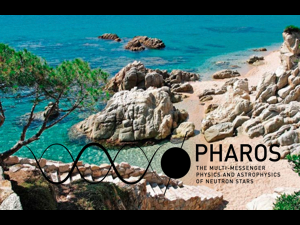Speaker
Dr
Alice Harding
(NASA Goddard Space Flight Center)
Description
Recent progress in global simulation of pulsar magnetospheres is changing our models of pulsar particle acceleration, cascade pair production and high-energy emission. Simulation of a force-free pulsar magnetosphere 15-20 years ago marked a major advance in understanding the current closure and the structure of the wind. The first simulations of dissipative MHD pulsar magnetospheres with finite conductivity opened the door to modeling particle acceleration and radiation on a global scale. For simulations having very high conductivity, as would be expected for young and energetic pulsars, most of the high-energy emission comes from outside the light cylinder near the current sheet. Most recently, particle-in-cell simulations that couple particle dynamics to field structure are the next step in self-consistent pulsar magnetosphere modeling. The radiation characteristics in models based on these simulations match those of gamma-ray pulsars detected by Fermi. The next steps toward a full pulsar magnetosphere model will require global simulations coupled to pair cascade microphysics.
Primary author
Dr
Alice Harding
(NASA Goddard Space Flight Center)

